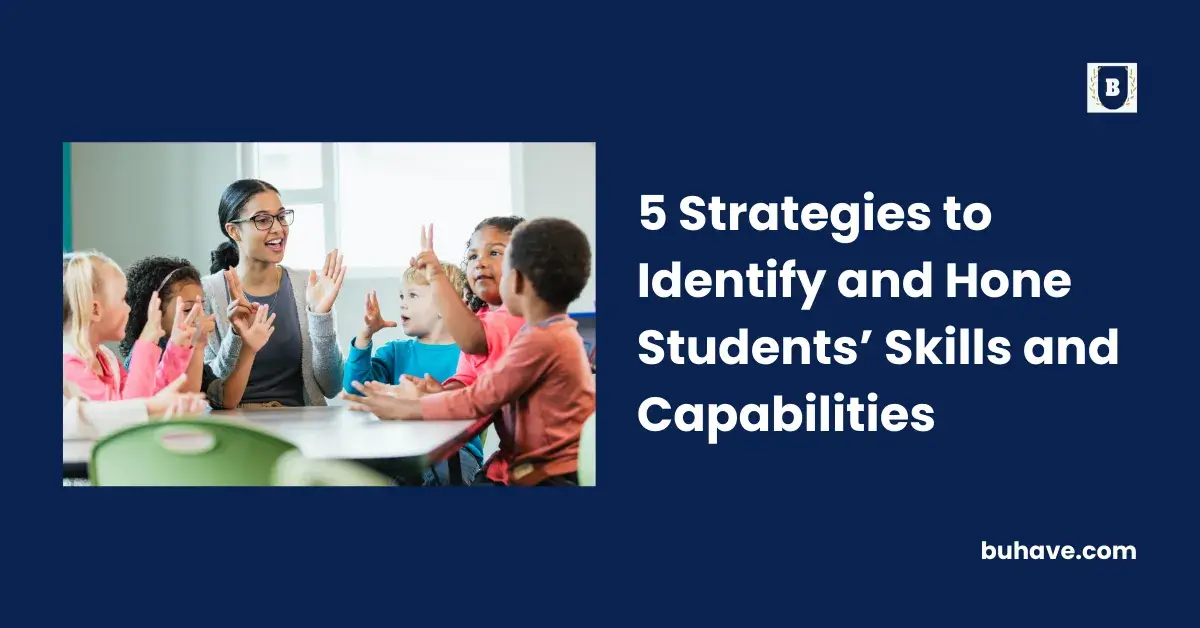Every student enters the classroom with a unique set of skills and capabilities. Some may excel in logical reasoning, while others might have a flair for creativity.
Recognizing and nurturing these individual strengths is crucial not only for the student’s academic growth but also for their personal and professional development.
Educators, thus, play a pivotal role in this recognition process. By adopting strategic methods, teachers can ensure that every student’s potential is realized and further developed. Here are a few strategies to consider.
Personalized Learning Plans
It’s a well-acknowledged fact that a one-size-fits-all approach doesn’t work in education. Each student is different, with individual learning needs and capabilities. Recognizing this is the first step; the next is designing a curriculum that caters to these unique requirements.
Enter personalized learning plans. These are custom-tailored teaching strategies that focus on a student’s strengths while addressing their weaknesses. For instance, a student might grasp mathematical concepts quickly but struggle with putting them into words. Their personalized plan could then incorporate more verbal exercises in math, helping bridge the gap.
This approach ensures that students are not just passive recipients of the information. Instead, they become active participants in their learning journey, working at a pace that suits them best and in a manner that complements their strengths.
Advanced Training and Continued Education
The world of education is ever-evolving, with new teaching methods and techniques emerging continually. For educators, staying abreast of these developments is more than just a choice; it’s a necessity. One way to ensure that they’re equipped with the most updated skills and knowledge is through advanced training and further education.
An online masters in reading and literacy, for instance, is more than just an additional qualification. It’s a reservoir of modern methodologies, tools, and techniques that teachers can use to fine-tune their teaching strategies. By diving deep into reading and literacy techniques, educators can better understand the nuances of student capabilities.
They learn to recognize the signs of different learning styles, strengths, and areas that need attention. For example, a student who struggles with reading might excel in comprehension once the material is understood. Knowing how to teach them in a way that complements their strengths becomes a game-changer.
Moreover, these programs also emphasize real-world application, ensuring that the theoretical knowledge gained is directly translatable to the classroom environment. By focusing on hands-on strategies and the latest in teaching technology, these courses offer educators a well-rounded approach to student development. And since they’re online, educators benefit greatly from the flexibility and convenience they offer.
Project-Based Learning and Hands-On Activities
Traditional teaching methods, while effective to some extent, often fail to tap into the full range of a student’s capabilities. That’s where project-based learning comes into play. By engaging students in hands-on activities and real-world projects, educators can get a clearer picture of their strengths and interests.
For example, a history lesson might involve students creating a timeline of events, allowing those with a knack for visualization to shine. Or a science lesson could involve a hands-on experiment, giving students a chance to apply theoretical knowledge in a practical setting.
Through such activities, not only do students grasp concepts better, but they also get an opportunity to explore and showcase their skills. Whether it’s critical thinking, problem-solving, creativity, or teamwork, project-based learning brings out the best in students.
Observational Assessments and Reflective Feedback
Classroom observation holds a wealth of information. By simply observing how students interact, communicate, or even the way they approach a particular task, teachers can gain insights into their inherent skills and strengths. It’s not always about the final answer; sometimes, the approach or method a student adopts can shed light on their unique capabilities. For instance, a student who takes a little longer to complete a task but shows meticulous attention to detail demonstrates a strength in thoroughness and precision.
However, observation alone isn’t enough. Pairing it with reflective feedback can be transformative. Providing students with feedback that not only points out areas of improvement but also highlights their strengths can boost their self-esteem. For example, telling a student, “I noticed how carefully you approached the problem, ensuring no detail was overlooked. That’s a great strength to have,” can make a world of difference. Such feedback not only encourages students to continue leveraging their strengths but also instills a sense of pride and self-worth in them.
Incorporating Technology and Digital Tools
In today’s digital age, there are countless tools and platforms designed specifically to help educators identify student capabilities. From online quizzes that adjust their difficulty based on student performance to platforms that offer real-time analytics on student engagement and understanding, technology can be a game-changer.
For example, digital storytelling tools can help teachers identify students with strong narrative skills, while coding platforms can spotlight those with logical and computational strengths.
Furthermore, many of these tools come with features that allow for individualized learning pathways, ensuring that students can progress at their own pace focusing on areas they excel in while receiving support in those they find challenging.
Such tools not only make the process of identification more efficient but also cater to the modern student’s affinity for technology, making learning more engaging and relatable.
Conclusion
Every student has a unique set of skills and strengths waiting to be discovered and nurtured. As educators, the responsibility to recognize and hone these capabilities falls upon our shoulders. By incorporating advanced training, personalized learning, hands-on activities, observational assessments, and modern technology into our teaching strategies, we can ensure that we are doing justice to our students’ potential. After all, the journey of education is not only about imparting knowledge but also about fostering growth, development, and a lifelong love for learning.
– If you are looking for guest posts write for us education now.

